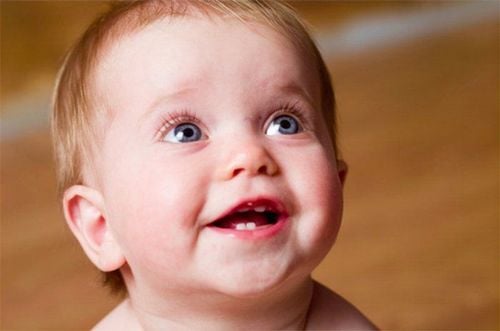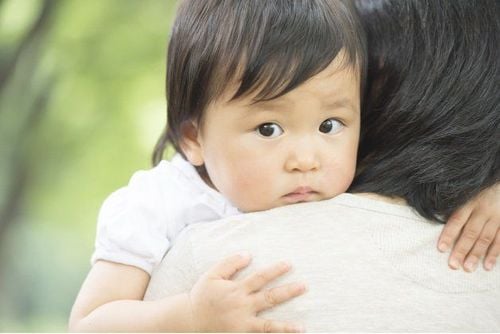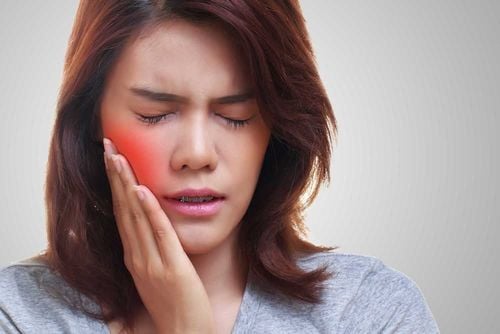This is an automatically translated article.
Nowadays there are many young children with tooth decay. The main reason is that children often eat snacks, do not brush their teeth, have no sense of hygiene and protect their teeth. To take care of their children's teeth, parents need to guide their children to brush their teeth right from the moment their first teeth erupt.
1. Timeline of dental care for children
Newborns Even though babies have not had any teeth yet, mothers need to use soft towels and dilute salt water to gently wipe their baby's gums (gums) every day. At this stage, the baby does not need to use toothpaste.
From 4 - 7 months of age When the first tooth begins to appear, you can brush your baby's teeth twice a day and use a small amount of fluorine / fluoride toothpaste. Note, only use a dot of toothpaste the size of a grain of rice. At this stage, your baby does not need to learn how to rinse or floss.
From 8 - 12 months old When you are 1 year old, or within 6 months since your baby's first tooth comes in, it's time to start taking your baby to the dentist to check and take care of your baby's teeth. As soon as your baby has 2 teeth close together, start flossing once a day.
From 1 to 2 years old Continue to practice brushing teeth twice a day. If your toddler shows an interest in brushing, have them do it themselves under your supervision. After the child completes, show him the missing points, forget to clean and brush his teeth again if necessary.
Around age 3 Start giving your baby a pea-sized amount of fluoride toothpaste. If your child doesn't like the taste of the toothpaste they're using, try something more appealing to children. Once you think your child is ready, start teaching him how to gargle and spit.
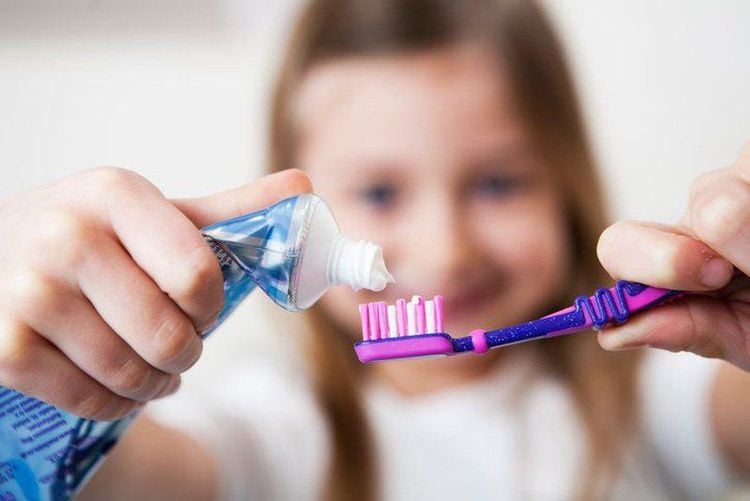
Kem đánh răng được sử dụng với định mức phù hợp với lứa tuổi của trẻ
From 6 to 8 years old At this age, most young children can brush their own teeth and floss proficiently. However, parents should still supervise their children or brush their teeth together for convenient guidance and example. Brushing properly is to have 3 sides inside, outside and chewing surface. Brush each time for 3-5 minutes, at least twice a day, morning and night, or preferably after each meal.
About 10 years old Congratulations, your child is now fully capable of brushing his/her own teeth. From the age of 12 onwards, when enough permanent teeth have erupted, parents should focus on flossing their children to clean between the teeth. At the same time, should limit the child's snacking on sweets and starches. Instead, add more fiber and calcium in the meal to help your child's teeth develop better.
2. Tips for when your baby refuses to brush his teeth
According to experts, in order for children to be interested and voluntarily brush their teeth properly, parents need to gently guide and model for their children to imitate. Parents should be patient, help children get used to it, should not force or threaten like: "If you don't brush your teeth, I'll take you to the dentist to have your teeth pulled out / If you don't brush your teeth, you can't... (a baby thing). like) anymore”.
Instead, parents need to create a happy atmosphere, create lively games for children to enjoy brushing time. You should brush your child's teeth together and buy scented toothpastes, colorful toothbrushes with funny shapes.
In addition, parents can refer to some small and simple tips that other parents have successfully applied. For example:
Put a high chair for your baby to sit on level with the mirror of the sink and brush his teeth with him. Bring your child along to let them choose their favorite toothbrush and toothpaste, can buy many types to change every day. Hang pictures of children brushing their own teeth, pictures of decayed teeth... on the bathroom wall and show them to them. Tell your baby that if you brush your teeth, you will be more beautiful and eat better, otherwise if you don't brush your teeth, your teeth will be decayed and ugly as shown in the photo. Regularly open cartoons with characters brushing their teeth for children to see and ask to follow. Hold a contest for your child to brush their teeth properly and offer small rewards, like going to the park. If your child refuses to brush his teeth, you can help him by brushing and listing the foods he ate during the day. For example: "This tooth eats rice, this tooth eats porridge, this tooth eats candy, this tongue drinks milk..." Or you can say "Brush this tooth to let the worm fly out, brush the other tooth so the worm can't get in." come in too...” After doing this a few times, your child will brush his teeth thoroughly and enjoy himself without having to rely on you anymore. Brush your child's teeth when he's distracted, like watching TV, so he'll get used to the feeling of brushing and the taste of toothpaste.
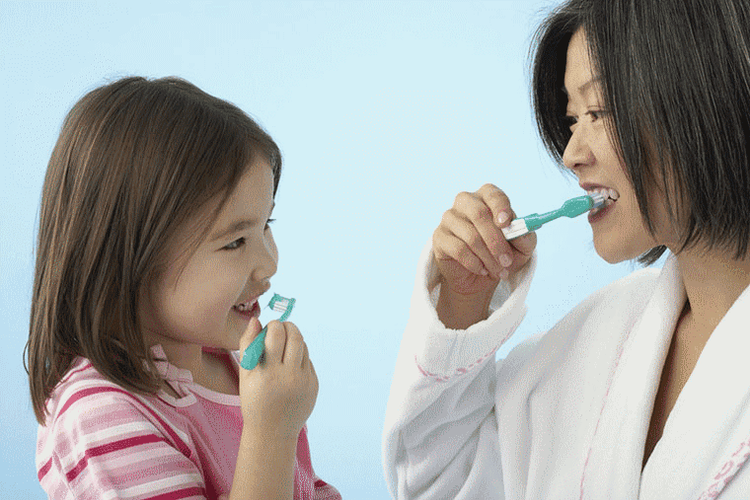
Cha mẹ nên hướng dẫn tập đánh răng cho bé một cách nhẹ nhàng
To get results, children will brush their teeth voluntarily, enthusiastically take the brush, squeeze cream, ... parents need to patiently try many different ways. In addition to applying the above tips, you can create many good methods to take care of your children's teeth more effectively.
Besides dental care for children, nutrition also plays an important role in the development of children. Parents should supplement their children with supporting products containing lysine, essential micro-minerals and vitamins such as zinc, chromium, selenium, and B vitamins to help fully meet the nutritional needs of children. At the same time, these essential vitamins also support digestion, enhance nutrient absorption, help improve anorexia, and help children eat well.
Parents can learn more:
Signs of zinc deficiency in children
Micronutrient deficiency and failure to gain weight in children
Please regularly visit Vinmec.com website and update useful information to take care of your child. Take care of the baby and the whole family.
Reference source: babycenter.com





